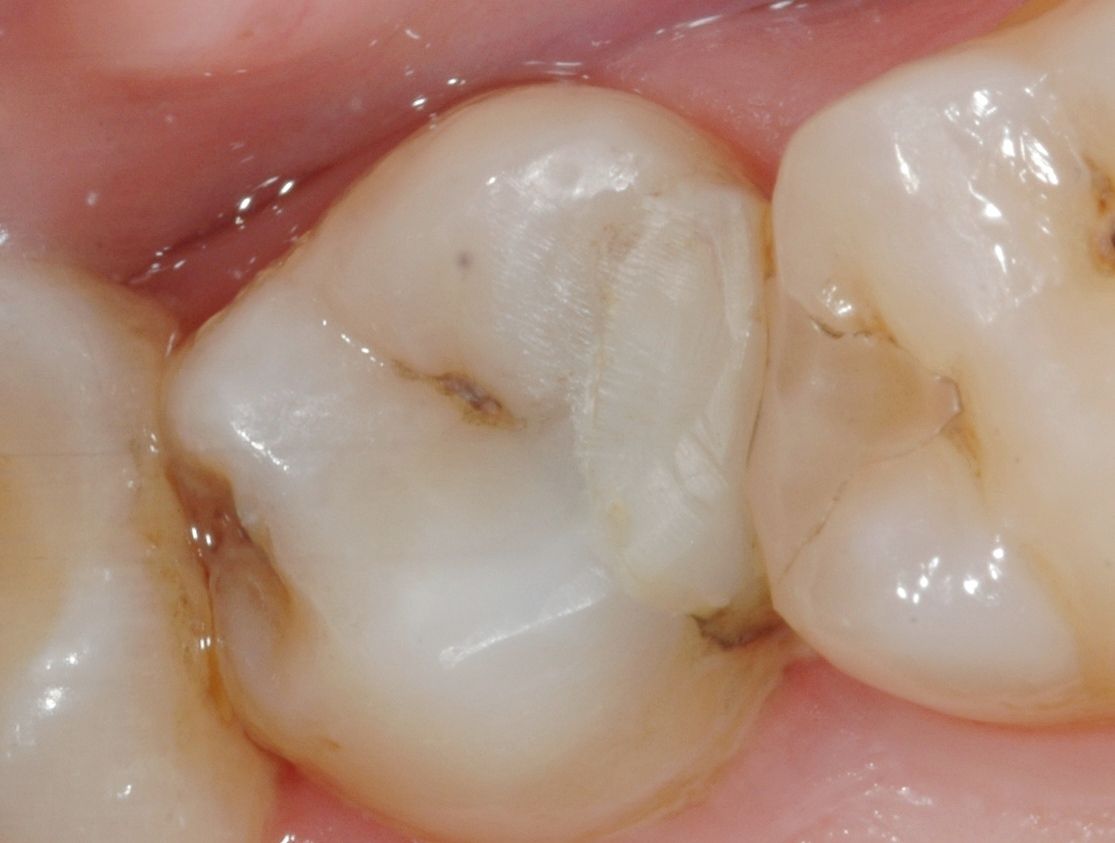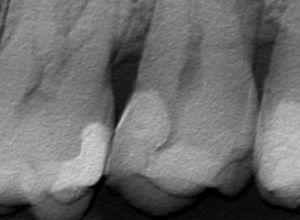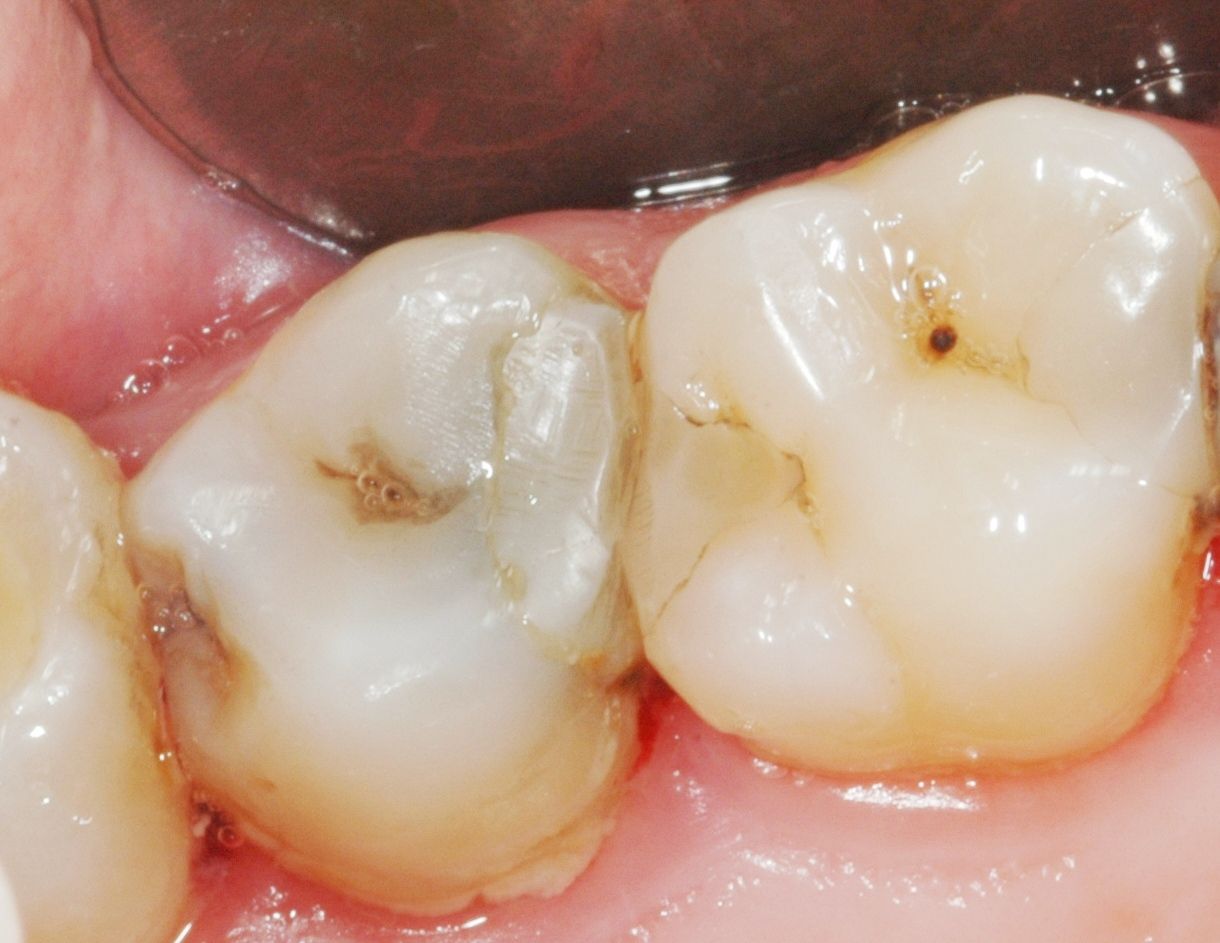Do Patients Less Harm
Dentists have more knowledge, tools, and products to perform less invasive dentistry.
In the 1986 movie musical, Little Shop of Horrors, Steve Martin plays Orin Scrivello, DDS, a character who we learn—through a toe-tapping, upbeat musical number—is a sadist who discovers his true calling by becoming a dentist.
Those who have chosen to embrace the profession probably don’t appreciate the caricature. Still, there’s a reason that the character resonates so well; a lot of people have dentophobia—fear of the dentist.
According to a 2018 study conducted by the market research platform DentaVox, 61% of respondents (18,000 individuals worldwide) are afraid of the dentist. And their primary reason? Pain.1
Dentists have always tried to be as minimally invasive as possible, and there are new products, tools, and techniques to help in that endeavor.
Pain-Free Pursuits
Patients may find it hard to believe dentists actually do try their best to ease the pain. Jeffrey Lineberry, DDS, a general dentist in Mooresville, North Carolina, says that the field seems to follow pain mitigation trends.
“Dentistry went through a phase,” Dr Lineberry says. “It started, at least for cosmetic and esthetic dentistry, being very minimally invasive, and then we got into more invasive work. And now the pendulum has swung back the other way and [dentistry] is more minimally invasive, as far as restorative options.”
“Over time, we’ve had the advent of better bonding systems. Now we can predictably bond, add to teeth, and maintain them in ways that actually last,” Dr Lineberry continues. “I also think that, nowadays, we have patients who are regularly using clear aligners, so rather than removing enamel and reshaping teeth, we’re moving teeth around. Maybe the same patients weren’t open to doing braces before, but now they’re more willing to do clear aligner treatment.”
Performing the least possible invasive approaches and pain reduction isn’t a new concept.
“I think dentists have always tried to treat dental disease with minimally invasive techniques, I truly do,” adds Jason Goodchild, DMD, vice president of clinical affairs at Premier Dental Products.
“I think part of where we’ve fallen is that we haven’t necessarily had the tools to go along with minimally invasive dentistry,” he continues. “That’s an important distinction, at least in my mind. No dentist wants to make a big hole in a patient’s tooth to fix a small carious lesion. No dentist wants to cause unnecessary pain or discomfort. All dental professionals want to make coming to the office easier, but have we always had the tools to be able to reach that goal, to provide that level of patient service?”
In 2021, products, tools, and techniques seem to be catching up in the race for minimally invasive dentistry.
“Knowledge and materials and everything else [including techniques and technology] have definitely improved to a point where we can do things more minimally or be more conservative in our preparations and treatments,” Dr Lineberry says.
“Some of the materials are better; they’re stronger, and they don’t have to be as thick,” he adds. “There are topical anesthetics and more that the hygienists can apply to patients and keep them comfortable, including minimum scaling and root planing. That helps the patients avoid getting injections.”
Some products serve specific patient populations too.
“If you want to think about it from a conservative way of doing things that can help patients,” Dr Lineberry continues. “DMG America has come out with LuxaCrown, which is a temporary crown material, but it’s been approved for 5 years of use. Take a patient who is elderly or maybe [a patient] who is not in good health, and they need to have a crown done or redone or replaced. That’s an opportunity where we can do it for the patient directly and help minimize the cost for patient and visits.”
Easier Endodontics
Endodontic treatment is somewhat synonymous with invasive dentistry. If dentists are not careful in their work, it may lead ultimately lead to a tooth’s loss.
Historically, the tools used in endodontics have been intrusive. However, manufacturers are looking to change that intrusiveness for gentler dentistry. SS White Dental produces several families of burs to maximize tooth conservation.
“[Keeping] minimally invasive dentistry, or conservation [in mind], SS White Dental features innovative methods for the preservation of healthy dentin and enamel during various dental procedures,” says Carrie Nelson, director of marketing at SS White Dental.
“Conservation of healthier tooth structure has shown to extend, by up to 12 years, the life of restorations, as well as avoid inadvertent pulp exposure,” she continues. “The increased longevity of dental work translates into increased levels of patient confidence toward their dental care providers.”
According to Nelson, the functionality of SS White Dental’s burs is due to the company’s manufacturing and engineering processes.
“We all know that the primary concern of any dentist is to offer excellent care at all times and achieve the best patient satisfaction experience possible,” she says. “SS White products, such as Fissurotomy® burs, SmartBursII®, and EndoGuide® burs, help you achieve this goal by providing your practice with tools and procedures that many dentists report as saving 40% to 70% healthier tooth structure compared with using competing instruments.”
Another purpose to the burs’ conservational approach is to reduce harm by retaining tooth structure.
“Reduction of microfractures is another value-added element in the conservation principle,” Nelson says.
“These microfractures, often a by-product of coarse and supercoarse diamonds, are greatly reduced by the use of Great White® Z diamonds, which are manufactured with fine diamond particles [instead.] Additionally, studies have shown that lab technicians reduce surface microfractures on zirconia copings when using fine-grit Great White Z diamonds to make final adjustments before veneering,” Nelson adds. “All this results in minimizing or even eliminating the adverse effects of pain, short-lived restorations, and overall patient dissatisfaction.”
The conservation principle continues with even more patient advantages.
“Another advantage of the conservation principle is that anesthesia is often not required when doing cavity preparation,” Nelson says. “A healthy tooth is conserved and accentuated by the use of certain SS White caries removal instruments—Fissurotomy burs and SmartBursII— that do not open dentinal tubules or elicit a pain response during decayed dentin removal. What has traditionally been an invasive procedure is easier on the tooth and, ultimately, the patient.”
That’s not all. Files have been refined to make endodontic treatment easier for patients.
“SS White Dental’s DCTaper™ Endodontic Rotary File system is anatomically designed with the most minimally invasive shapes to provide greater safety, strength, and flexibility in negotiating canals,” says Nelson. “We believe increased safety reduces stress and creates better patient outcomes. SS White Files offer greater flexibility that is more resistant to cyclic fatigue.”
Painless Products
Clearly, less invasive dentistry helps mitigate pain. But that’s not all it does. It can also negate patient anxiety surrounding the pandemic. Because of COVID-19, doctors are shying away from performing aerosol-generating procedures. SDI North America’s Riva Star™ is a silver diamine fluoride product that causes tooth desensitization and arrests caries, thus avoiding potentially hazardous aerosols.
“Everybody’s concerned about going to the dentist these days,” says Dan Carrington, sales manager for SDI North America. “If [patients] go, they don’t want to hear that they have to come back to get their tooth restored. And the dentist is faced with all these additional charges for PPE [personal protective equipment] and cleaning their office and their chair. The dentist wants to do as much work as they can and then send the patient out with no pain, while also killing the caries, and an providing the patient with an esthetic tooth.”
There is another treatment for certain patients that is less meddlesome and less painful.
“For parents of small children and the elderly, there’s another treatment. Rather than giving them a needle and doing a filling, [dentists] can just use silver diamine fluoride and put some gloss on it,” says Carrington. So, it’s changing the market dramatically.”
Silver diamine fluoride is nothing new. It’s been around in some form or another for more than 200 years. In fact, early forms of it caused teeth to turn black.2
“It actually used to be a status symbol in Japan,” says Carrington. “It was used in Japan because rice has sugar, but only royalty could afford it. And it was seen as a status symbol; if you had black teeth, that meant that you could afford silver diamine fluoride. But the issues were, how do you deliver that, and how do you arrest caries? Even until it was launched in the United States, there have been other products in the 3%, 6%, 18% [formulation] range, but it wasn’t until they hit the 38% threshold that it started to see an impact on arresting caries and desensitizing.”
Thanks to its evolving formulations, silver diamine fluoride maintains its place in dentists’ current armamentaria. For example, Elevate Oral Care offers Advantage Arrest Silver Diamine Fluoride 38%, which is a silver diamine fluoride 38% formulation indicated for the treatment of dentinal hypersensitivity.
“Today, doctors are calling it the ‘tooth saver’ because where they would normally take out an old amalgam due to secondary caries from it being broken or leaking and it has gotten under the amalgam, what happens now is the doctors don’t have to take all the caries out. They do not go more than a half a millimeter deep, because the silver diamine fluoride will go down that far. It’ll kill the caries. So, it’s going to make it a hard rock surface and it will protect the tooth and the root,” Carrington says.
This more conservative approach can reduce the need for root canals for some patients, he adds.
Nonintrusive Tools
Dr Goodchild observes that one of the challenges toward easing patients’ pain is the availability of dental tools. As technology evolves, so does the opportunity for less invasiveness.
“When I was in dental school, root canal was a bad word to patients,” Dr Goodchild says. “They heard that out of a dentist’s mouth, and they cringed. But now, with the technology of root canals, we’ve got digital imaging like CBCT to visualize the anatomy of the tooth better; we can see in 3D. We have microscopes, we have better file systems and irrigation systems, and we have better equipment. We’ve got all this better stuff to do the procedure better, more consistently, and faster because I think dentists always want to subscribe to ‘How can I do it better?’ ‘How do I also provide faster dentistry and make it less invasive and maybe even more cost-effective?’”
“We’ve always wanted to, but we haven’t always had the tools to do it. Things are always evolving, and maybe within the last 10 years or so, we’re finally getting to that point where dentistry really can be easier for patients and providers,” he adds.
Those high-tech tools come with a steep price tag, but the cost is coming down. Given enough work, Dr Goodchild says that the tools can pay for themselves.
“If you talked to me about a cone beam 10 or 15 years ago, I would have immediately thought of a price tag well over $100,000,” Dr Goodchild says. “Now it’s not as much, but these units are still relatively expensive. Even now, if I say that you need to spend $75,000 on a cone beam unit, you may think, ‘Wow, that’s a heck of a lot of money.’ But what if I say you could be doing 5 or more cone beam exams a day, with each one costing $350? How long does it take to recoup that investment? You may think that there’s cost and value, and it’s important to focus on the additional benefits it brings to your dental practice and patients.
“On the face of it, there’s a big sticker price,” he continues. “But what kind of a recoup time would you need for the return on your investment? The clinical benefits of a CBCT or other new technology can be huge, not just in terms of what you can see, but also the improved care you can deliver. So again, the idea of providing better, safer, and faster treatment comes in when you talk about the value of adding better technology to the practice.”
Of course, not everything in the pursuit of minimally invasive dentistry comes with an exorbitant cost.
“On the consumable side, there are things like silver diamine fluoride, sealants, and resin infiltration techniques,” Dr Goodchild says. “You’ve also got fluoride varnish and fluoride treatments. You can think of minimally invasive dentistry as preventive treatments, which are inexpensive, as well as equipment that can be more expensive. Putting it all together—digital imaging and tools to help identify early carious lesions and treat them conservatively, combined with low-cost measures, like risk assessment and preventive treatments—is what minimally invasive dentistry is all about.”
Patient Education
and At-Home Care
The least invasive technique, of course, is not having to perform any restorative work at all, and the best way to do that is through patient education. Ensuring that patients understand the best ways to avoid dental problems is the best way to keep them from experiencing pain.
“[We need to] think about dentistry as 2 things: prevention and preservation,” Dr Goodchild says. “We have to get the message out that it’s so important [for patients] to go to the dentist when [they] don’t have a problem, because when they do have a problem and go to the dentist, it can be more expensive, more invasive, more difficult, and possibly more painful.”
Spreading patient awareness starts with routine—both routine care at home and routine visits to the dentist.
“Generally, [routine visits mean] there’s no chief complaint,” says Dr Goodchild. “Basically, patients see the hygienist and dentist regularly to maintain health on a customized schedule before a problem arises. And ideally, when patients can stay healthy and address small issues before larger dental issues can occur, we are practicing minimally invasive dentistry.”
“How great is it for a patient when they visit the dental office for a recall appointment, and the dentist and hygienist say, ‘No cavities, you’re doing a great job’?” he continues. “Everybody in our office wants to help patients get healthy and stay that way. It’s great to see it in action.”
Children hear about dental health techniques at an early age, and everybody knows that they’re supposed to brush and floss. So where is the disconnect?
“When you see somebody in the chair and say, ‘Are you flossing?’ or ‘How are you taking care of your teeth at home? And they respond with, ‘Oh, I’m not flossing.’ How do you motivate that patient to improve their oral hygiene regimen or get them to change their behavior?” says Dr Goodchild.
“I wish I had the answer for how to motivate patients to see not only the oral health care benefits of improved oral hygiene but the systemic health benefits as well. They may do a better job taking care of their teeth for the days after the dental visit, but getting patients to really adopt a new behavior is hard. Anyone practicing dentistry will, hopefully, agree.
“I think we do a great job with patients when they are in the office,” Dr Goodchild continues. “We want patients to take better care of their teeth because we know that when they come in and they’re in pain and things break down, it can be more expensive, painful, and invasive to fix. Maybe it’s just repetition; you see patients, hopefully, every few months, and you just keep giving them the same encouragement, and one day it clicks and they start doing everything you recommended to stay healthy. That’s my hope.”
Even if the patient requires restorative work, that educational component should continue. It is critical for its longevity.
“I consider myself a good dentist,” Dr Goodchild says. “I consider myself a very conscientious dentist. I’m going to be very detail-oriented if I ever have to take care of patients’ teeth. I can do the most beautiful filling, the most beautiful crown, and the most textbook restoration possible. But if patients don’t do their part at home, it’s all for nothing, meaning it’ll last for a while, but it’ll eventually fail because we have to do this together. This is an arm-in-arm, hand-in-hand, ‘It takes a village’ kind of mentality. We all have to be doing our part to maintain a healthy mouth and healthy restorations.”
“Sometimes patients ask me, ‘How long should this crown last?’ And I respond, ‘Today, the tooth and crown are healthy, and they will stay that way for a while, partly because of the quality work we’ve provided.’ But the secret to long-lasting dental health and dental work is in the patient’s hands. At the end of the day, maintaining dental health starts at home.”
Ultimately, everyone wants dentistry to be as minimally invasive as possible. Patients may hate their dental visits, but they do notice when new visits are easier than prior procedures.
“Patients do notice,” Dr Lineberry says. “Maybe not younger patients, but definitely some of the patients that are middle-aged and up. [They say], ‘Wow. When I was younger, this was more challenging, more difficult, and it seemed a lot harder in the past.’ Patients do notice that from time to time.”
As dentists go, Orin Scrivello, DDS, was an anomaly (not to mention fictional). He liked to inflict pain; however, throughout time, real dentists have made it their mission to ease patient discomfort, and advancements in tools, techniques, and products are making that mission easier.








 Download Issue: Dental Products Report April 2021
Download Issue: Dental Products Report April 2021

